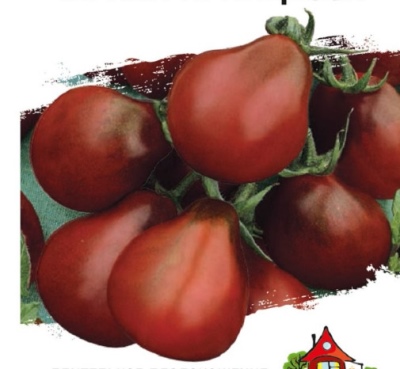
- Category: grade
- Growth type: indeterminate
- Appointment: fresh consumption, for pickling and preserving
- Ripening period: mid-season
- Ripening time, days: 110-115
- Growing conditions: for open ground, for greenhouses
- Marketability: high
- Bush size: tall
- Bush height, cm: up to 180
- Ripe fruit color: brownish brown
Choke tomatoes have excellent taste. They are also very useful for health, since the vitamins and antioxidants they contain help prevent diseases of the cardiovascular system and gastrointestinal tract, cancer and strengthen the body's immunity as a whole. A striking representative of this type of tomato is the Black Princess variety. Due to its unpretentious care, high yield and versatility in culinary terms, this variety has gained great popularity among amateur gardeners.
Description of the variety
The Black Princess is a mid-season, indeterminate plant. The bush is tall, can reach about 180 cm in height. Leaves are medium, pointed, gray-green in color.
Pros of the Black Princess variety:
sufficiently high germination of seeds;
long and abundant fruiting;
excellent taste of fruits;
various uses in cooking;
the possibility of growing in a covered greenhouse and in the open field;
resistance to fungal diseases.
The disadvantages of this variety include:
the need for pinching and tying a bush;
late ripeness.
The main qualities of the fruit
The fruits of this variety have a pear-shaped round shape. The surface is slightly ribbed, dense. The skin is soft and thin, not prone to cracking. At first, the color of the fruit is green, under the influence of the sun it becomes brownish brown. The weight of berries can reach 100-150 g. The pulp is not watery, fleshy, juicy and sweet.
Taste characteristics
Tomatoes of the Black Princess variety can be used in different ways in cooking: cut into salads, pickle, pickle, process into juices or freeze whole.
Ripening and fruiting
The Black Princess is a medium early variety - the time from germination to fruiting is 110-115 days. The variety has a fairly high seed germination rate - about 90%.
Yield
Tomato bushes of this variety bear fruit for a long time and abundantly. On average, the yield is 6-7 kg / m2.
The timing of planting seedlings and planting in the ground
Sowing seeds for seedlings should be done in March-April, planting in the ground - in May-June.

Growing tomato seedlings is an extremely important process, because it largely depends on whether the gardener can harvest at all. All aspects must be taken into account, from seedbed preparation to planting in the ground.
Landing scheme
Before sowing, the seeds should be treated with a solution of potassium permanganate and rinsed with slightly cool water. Then they are sown in a special container with soil, which is covered with a film and set aside in a warm place.
After about 1.5 months, the seedlings are transplanted into a greenhouse (glazed or foil) or into open ground, after digging holes for each seedling. Plants are planted at a distance of 40 cm from each other with a row spacing of 50 cm.

Growing and caring
To get a good harvest, the plant is formed into one stem, after removing all stepsons and lower leaves. Bushes should be tied to pegs or other vertical supports.
Water the bushes with slightly cool water about 1 time per week. To fertilize the soil, you can use various fertilizers or natural remedies, for example, chalk, ash or dry bird droppings. It is desirable to have abundant sunshine, since it is thanks to the sun's rays that the fruits acquire the color characteristic of black varieties. Also, the color of ripe tomatoes can vary (from pale crimson to deep red) depending on the pH level in the soil.
Bushes begin to bear fruit in July-August. When stored properly after harvest, seeds can remain viable for up to 10 years.




A plant needs different micronutrients at each stage of growth. All fertilizers can be divided into two groups: mineral and organic. Folk remedies are often used: iodine, yeast, bird droppings, eggshells.
It is important to observe the rate and period of feeding. This also applies to folk remedies and organic fertilizers.
Disease and pest resistance
The black princess is resistant to late blight (the causative agent is the oomycete Phytophthora infestans de Bary A), but for prevention purposes, especially in temperate climates, tomato bushes should be treated with biological preparations, for example, Trichodermina solution, every week, and also after rain.


Growing regions
For outdoor cultivation, southern sunny areas are suitable. In greenhouse conditions, the Black Princess variety can be grown in any region, for example, in the Central, North Caucasian, Volga and West Siberian regions.
Review overview
Basically, reviews for the Black Princess variety are positive. Buyers note a high percentage of seed germination and excellent taste of the fruit. Some amateur gardeners in their reviews emphasize that even without additional feeding and treatment from pests, the plants gave a high yield and did not succumb to pests. Housewives also note the versatility of using ripe fruits (conservation, juices, sauces, fresh consumption, as well as freezing for the winter).

























































































